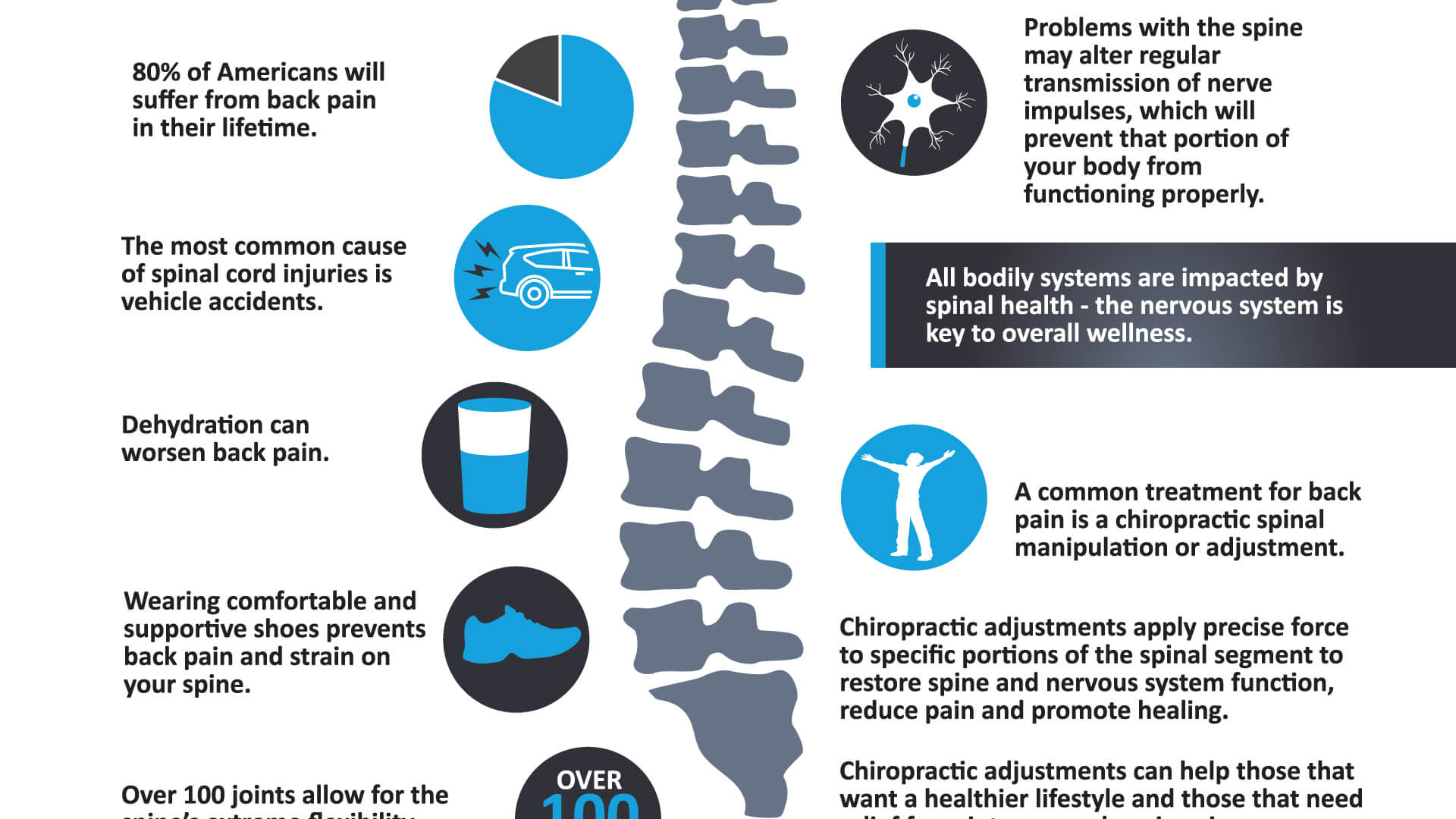Constant Tasks That Add To Pain In The Back And Ways To Stop Them
Constant Tasks That Add To Pain In The Back And Ways To Stop Them
Blog Article
Web Content Writer-Carstensen Vogel
Keeping correct position and preventing common pitfalls in day-to-day tasks can significantly impact your back health and wellness. From how you rest at your workdesk to just how you raise heavy things, small adjustments can make a large difference. Visualize a day without the nagging back pain that hinders your every action; the service could be less complex than you think. By making a few tweaks to your everyday routines, you could be on your means to a pain-free existence.
Poor Posture and Sedentary Way Of Life
Poor position and a less active way of life are two major contributors to neck and back pain. When you slouch or hunch over while sitting or standing, you put unnecessary strain on your back muscles and spine. This can cause muscular tissue inequalities, tension, and ultimately, chronic neck and back pain. Additionally, sitting for extended periods without breaks or exercise can damage your back muscular tissues and lead to stiffness and pain.
To battle poor stance, make an aware effort to sit and stand up right with your shoulders back and aligned with your ears. Keep in mind to maintain your feet level on the ground and avoid crossing your legs for prolonged periods.
Including normal stretching and reinforcing workouts into your day-to-day routine can additionally help improve your position and reduce neck and back pain connected with an inactive way of life.
Incorrect Lifting Techniques
Incorrect training techniques can significantly contribute to neck and back pain and injuries. When you raise heavy things, remember to flex your knees and use your legs to lift, instead of depending on your back muscle mass. Avoid turning your body while lifting and keep the item near your body to decrease strain on your back. It's important to preserve a straight back and stay clear of rounding your shoulders while lifting to avoid unneeded stress on your back.
Constantly evaluate the weight of the item before raising it. If it's as well heavy, ask for aid or use tools like a dolly or cart to transport it safely.
Bear in mind to take breaks during lifting jobs to give your back muscle mass an opportunity to rest and avoid overexertion. By applying correct training techniques, you can stop pain in the back and decrease the risk of injuries, guaranteeing your back stays healthy and balanced and solid for the long term.
Absence of Routine Workout and Stretching
A sedentary way of living devoid of regular exercise and stretching can dramatically contribute to neck and back pain and pain. When you do not engage in exercise, your muscle mass become weak and stringent, resulting in inadequate posture and increased strain on your back. Regular exercise aids strengthen the muscle mass that support your back, boosting security and reducing the risk of back pain. Including stretching into your regimen can likewise improve versatility, protecting against tightness and pain in your back muscles.
To prevent back pain triggered by a lack of exercise and stretching, aim for at least 30 minutes of modest exercise most days of the week. Consist of https://shouldyougotoachiropracto94948.smblogsites.com/31184621/chiropractic-look-after-anticipating-mommies-benefits-for-maternity-and-postpartum-recuperation that target your core muscle mass, as a solid core can assist ease stress on your back.
In addition, take breaks to extend and move throughout the day, especially if you have a desk job. Highly recommended Website like touching your toes or doing shoulder rolls can help soothe tension and stop pain in the back. Focusing on regular workout and stretching can go a long way in keeping a healthy back and lowering pain.
Final thought
So, bear in mind to stay up directly, lift with your legs, and stay energetic to stop pain in the back. By making easy changes to your everyday practices, you can prevent the discomfort and limitations that include back pain. Take care of your spine and muscle mass by practicing good pose, appropriate training techniques, and routine workout. Your back will thank you for it!
